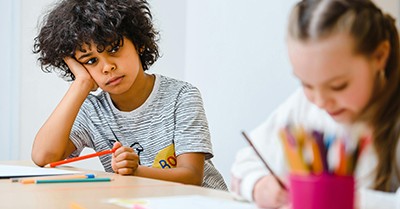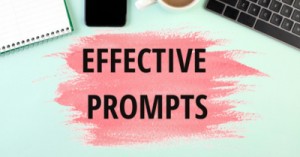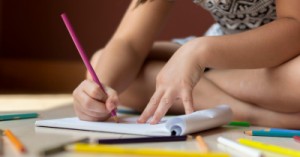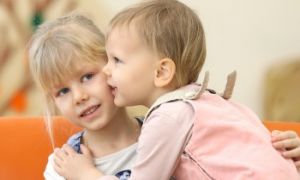In early childhood education, documentation is often framed as evidence or proof of learning, compliance, or curriculum alignment. But what if we reimagined it as a mirror? A tool that reflects not just cognitive milestones but emotional journeys, identity formation, and the quiet power of self-expression?
Visual documentation drawings, photos, annotated art, and symbolic storytelling can become a language of emotional literacy. It allows children to say what words cannot and invites educators to listen with their eyes, hearts, and intuition.
Why Emotional Literacy Matters
Emotional literacy is the ability to recognize, understand, and express emotions. For children, especially those navigating trauma, neurodivergence, or cultural transitions, visual mediums offer a safe, accessible way to process and communicate feelings.
When educators document with emotional intelligence, they validate the child’s inner world. They say, “Your story matters. Your scribbles speak.”
From Scribble to Symbol: What to Look For
Here’s how educators can interpret and elevate visual documentation:
-
Color & Pressure
Bold strokes may signal intensity; soft hues might reflect calm or uncertainty. Ask, “What were you feeling when you made this?” -
Repetition & Motif
Recurring shapes or symbols (e.g., spirals, hearts, monsters) often carry emotional weight. Invite children to name or narrate them. -
Placement & Space
A figure alone in the corner? A crowded page? These choices can reflect emotional states or relational dynamics. -
Storytelling Through Art
Encourage children to “read” their drawings aloud. Their words often reveal emotional themes, fears, or triumphs.
Tools That Support Emotional Literacy
Consider integrating these emotionally intelligent tools into your documentation practice:
-
Child Voice
Let children annotate their art with feelings, thoughts, or imagined dialogue. -
Reflective Caption Kits
Use affirming language to scaffold pride and emotional insight. -
Modular Portfolios
Organize documentation by emotional themes (e.g., “Brave Moments,” “Kindness in Action”). -
Symbolic Stickers & Icons
Invite children to choose symbols that represent their mood or message.
Beyond Compliance: A Culture of Emotional Resonance
When visual documentation becomes a tool for emotional literacy, it transforms the educator’s role. We become co-authors of children’s emotional narratives, curators of their symbolic language, and witnesses to their growth—not just as learners, but as whole beings.
In a sector often driven by outcomes, this approach restores dignity, depth, and delight. It says, “Your scribbles are stories. And we’re listening.”
Further Reading
Feelings First: A Ritual for Emotional Safety in Early Childhood
Supporting Mental Health Of Children, Families and Educators
How Educators Decode Big Feelings with Little Words
Benefits Of Creative Arts For Children In Early Childhood
Encouraging Children With Painting







 Here is the list of the EYLF Learning Outcomes that you can use as a guide or reference for your documentation and planning. The EYLF
Here is the list of the EYLF Learning Outcomes that you can use as a guide or reference for your documentation and planning. The EYLF The EYLF is a guide which consists of Principles, Practices and 5 main Learning Outcomes along with each of their sub outcomes, based on identity,
The EYLF is a guide which consists of Principles, Practices and 5 main Learning Outcomes along with each of their sub outcomes, based on identity, This is a guide on How to Write a Learning Story. It provides information on What Is A Learning Story, Writing A Learning Story, Sample
This is a guide on How to Write a Learning Story. It provides information on What Is A Learning Story, Writing A Learning Story, Sample One of the most important types of documentation methods that educators needs to be familiar with are “observations”. Observations are crucial for all early childhood
One of the most important types of documentation methods that educators needs to be familiar with are “observations”. Observations are crucial for all early childhood To support children achieve learning outcomes from the EYLF Framework, the following list gives educators examples of how to promote children's learning in each individual
To support children achieve learning outcomes from the EYLF Framework, the following list gives educators examples of how to promote children's learning in each individual Reflective practice is learning from everyday situations and issues and concerns that arise which form part of our daily routine while working in an early
Reflective practice is learning from everyday situations and issues and concerns that arise which form part of our daily routine while working in an early Within Australia, Programming and Planning is reflected and supported by the Early Years Learning Framework. Educators within early childhood settings, use the EYLF to guide
Within Australia, Programming and Planning is reflected and supported by the Early Years Learning Framework. Educators within early childhood settings, use the EYLF to guide When observing children, it's important that we use a range of different observation methods from running records, learning stories to photographs and work samples. Using
When observing children, it's important that we use a range of different observation methods from running records, learning stories to photographs and work samples. Using This is a guide for educators on what to observe under each sub learning outcome from the EYLF Framework, when a child is engaged in
This is a guide for educators on what to observe under each sub learning outcome from the EYLF Framework, when a child is engaged in The Early Years Learning Framework describes the curriculum as “all the interactions, experiences, activities, routines and events, planned and unplanned, that occur in an environment
The Early Years Learning Framework describes the curriculum as “all the interactions, experiences, activities, routines and events, planned and unplanned, that occur in an environment


